What happens if property insurers are allowed to exclude wildfires from coverage?
“Are we just going to turn everybody loose and let the fires burn our houses down?” Nevada just did — and others may follow.
Nevada just did something remarkable that will have far-reaching effects across the U.S. In June 2025, with the passage of Nevada AB 376, Nevada became the first state to expressly allow property insurers to exclude wildfire from the perils insurers must cover in order to offer home insurance within the state.
Back in the 1960s, many property insurers decided that paying out claims for flood damage no longer made business sense. In 1968, the National Flood Insurance Program was launched to fill the gap created by this mass exit, providing federal flood insurance across the country. It was supposed to be a deal — public insurance only in exchange for more prudent development practices. Over time, that deal has been rendered mostly toothless.
Well, there will be a push to do the same thing with fire coverage, I predict.
Nevada might be the first, but it will not be the last. Homeowners will be surprised that their policies don’t cover fire. They will scramble to find alternate coverage. It will be very expensive. They will be underinsured. In the event of a wildfire (as defined, under the new Nevada legislation, by the insurer), they will suffer. There will be pressure to have the state provide fire coverage through a FAIR Plan. When the state plan proves to be insolvent, as the California plan may soon be, there will be calls for federal fire insurance or reinsurance like the National Flood Insurance Program. At a hearing (starts at 1:12:00) in March of this year before the Nevada Assembly Committee on Commerce and Labor, Assemblyman PK O’Neill made clear that was the idea: he said that the new exclusion was “not unlike what the current existing is for flood insurance.”
Assemblyman PK O’Neill
It’s not clear that Nevada legislators understood that they were enacting a permanent exclusion from wildfire insurance into law.* Adam Plain, the Insurance Regulation Liaison for the state’s Division of Insurance, testified in March that insurers’ ability to exclude wildfire would automatically expire at the beginning of 2030 “unless reauthorized by the legislature prior to that date.” But the bill as enacted in June includes no endpoint for this power to exclude fire coverage.
Regulation Liaison Adam Plain
I watched two hearings about the bill, and legislative confusion seemed to be the point. For me, the real news in the bill is this permanent shift in the status of fire coverage, making it optional rather than mandatory. But most of the talk about the June bill was focused on praising the “regulatory sandbox” it also creates. That sandbox, based primarily on model language drafted by an insurance industry trade association (NCOIL — remember ALEC drafting state telecom laws — same idea) sets up a four-year experiment in alternative models and approval processes for innovative insurance models — a “safe space for testing new products or services that might not fully comply with current regulations,” as Assemblyman O’Neill said in March. Innovation! Deregulation! Lots of praise for all of that from those present, as well as from groups like the Libertas Institute, who called the bill “a strong move toward innovation,” Americans for Prosperity, and the National Association of Mutual Insurance Companies, who said the legislation “will promote pro-consumer market competition between insurers and assist insurers and their ability to offer new innovative ways to address evolving needs of the consumer.” Not much mention of wildfires.
That sandbox will end in 2030 unless the legislature signs up to keep it going. That’s the four-year element of the overall bill, designed to “provide ample incentive for insurers to fully participate in not only getting innovative products to the marketplace but also giving them a little bit more .. flexibility in order to generate revenue that they tell us is needed in order to manage the risk,” according to Nevada Insurance Commissioner Scott Kipper. By contrast, the power to exclude fire insurance has no time limit, but that wouldn’t have been clear to anyone listening.
The “regulatory sandbox” carries risks for consumers all by itself. For one thing, it opens the door for less well-capitalized insurers to do business in the state—“carriers that may not have the level of the solvency requirements, but want to test those waters nonetheless,” according to Commissioner Kipper’s slightly opaque wording. How will the insurance regulator determine whether the sandbox has been a success? That’s up to the participating carriers, according to Plain, who said in May (starts at 47:00) that “the sandbox provisions actually require an insurer who’s applying to participate to set their own benchmarks of what the successful test program will look like.”
But the power to exclude fire is momentous. Assemblyman Max Carter understood this and asked a sharp question in May:
It sounds like you’re proposing to move wildfire coverage out of a understood piece of homeowner coverage to an à la carte item similar to flood insurance, but I don’t believe, is there any, is that what’s being proposed -- and is there any federal safety net like the National Flood Insurance program when it comes to wildfires, are we just going to turn everybody loose and let the fires burn our houses down?
Assemblyman Max Carter
Commissioner Kipper conceded in response that “writing standalone wildfire insurance would be an option for carriers,” which is one way of framing what’s going to happen. I predict that fire insurance will become expensive and rare in Nevada.
Commissioner Scott Kipper
But it was the next part of Kipper’s response that got my attention:
As far as your question about the NFIP and the national program in this area, national safety net, there are certainly a number of considerations taking place in Congress right now that would provide either a national wildfire peril insurance program or some sort of reinsurance safety net that states could apply to and be reimbursed in the event of a catastrophic fire.
There are some proposals out there about this issue, but no backstop currently exists in Nevada or at the federal level. In the short term, beginning in January, homeowners in Nevada are in for a shock. Let’s hope everyone understands that their policies don’t include fire. Mr. Plain was vaguely reassuring on this front, pointing out in May that “the bill will require some regulatory lift by the Division [of Insurance]. We intend to make sure that for example, consumer protections and disclosures are encompassed in those regulations.” We’ll see. Michael Delong of the Consumer Federation of America managed to see a copy of the amended bill right before the March Assembly Committee hearing and called in to express strong opposition to the legislation, saying that it was “an attack on consumer protection.”
Delong also said that “allowing insurers to exclude wildfire coverage would be a very bad idea, leading to a hollowing out of insurance coverage.” True enough. Many Nevada homeowners may not be able to afford separate fire coverage. But we are now on that path.
The long term question everyone should be asking is: Is creating a federal safety net for fire insurance a good idea? Why would the federal government go into the business of subsidizing living in areas that insurers don’t want to insure and reinsurers don’t want to cover? Why wouldn’t we, instead, carefully plan for subsidizing and incentivizing the enforcement of better building codes and carrying out more prescribed fires to lower risks? We also need better fire prediction models, I learned at NCAR’s Research Applications Laboratory last week. Fire research is sorely underfunded. We should be spending money on that.
We are geniuses at shifting risks, kicking the can down the road, and monetizing development in unsafe areas. Nevada is home to the fastest rate of Wildland-Urban Interface (WUI) development in the country—over the last 30 years, the number of homes in the WUI more than tripled. The state has also seen nearly 20% of its land area burn over the last 40 years. We need to get better, everywhere, at minimizing physical risks instead.
_____
*Here is the text of the Nevada exclusion provision from Nevada AB 376:
Sec. 25.1. Chapter 691A of NRS [a plain-vanilla section entitled Property Insurance that requires insurers to issue contracts that meet state requirements] is hereby amended by adding thereto a new section to read as follows:
1. An insurer that issues a policy of property insurance may exclude the peril of wildfire from the coverage provided under the policy.
2. An insurer may, subject to any other applicable provisions of this title, issue a policy of property insurance that solely covers the peril of wildfire. Such a policy may be offered:
(a) On a standalone basis; or
(b) In coordination with a policy that excludes the peril of wildfire pursuant to subsection 1.
3. An insurer may use a definition of “wildfire” in the policy that varies from the definition set forth in subsection 4 if the Commissioner has approved the variance.
4. As used in this section, “wildfire” means an unplanned and uncontrolled fire in an area of combustible vegetation that originated from outside any residential or commercial property.



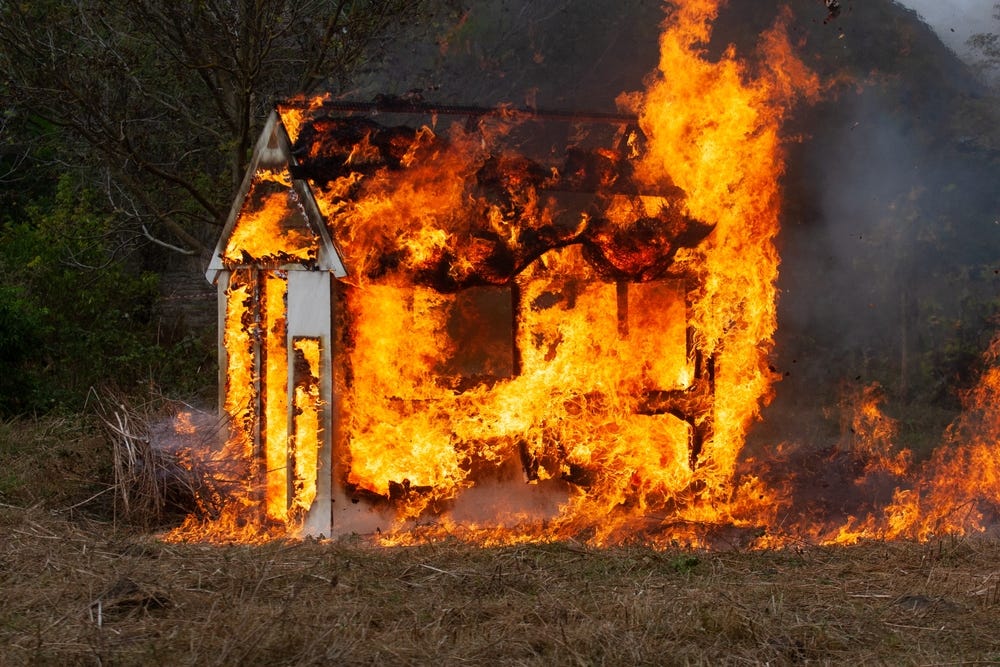
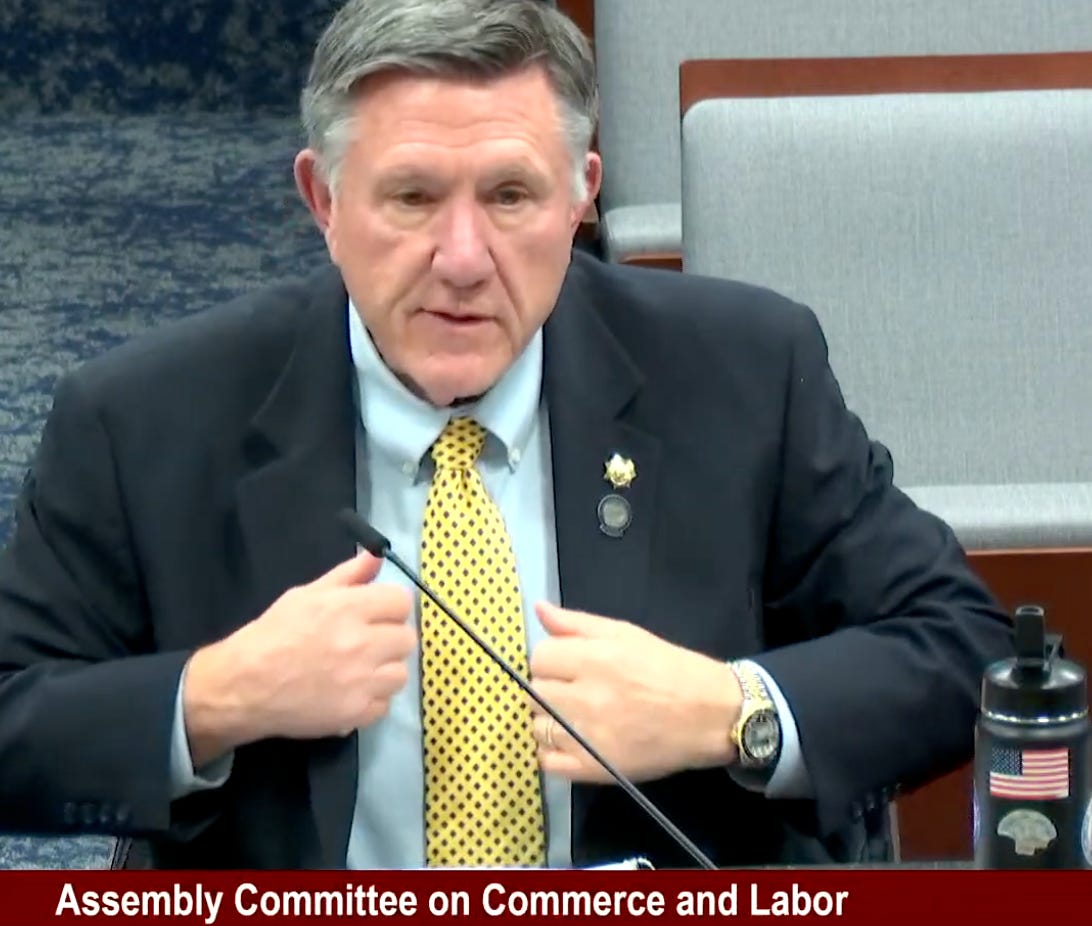
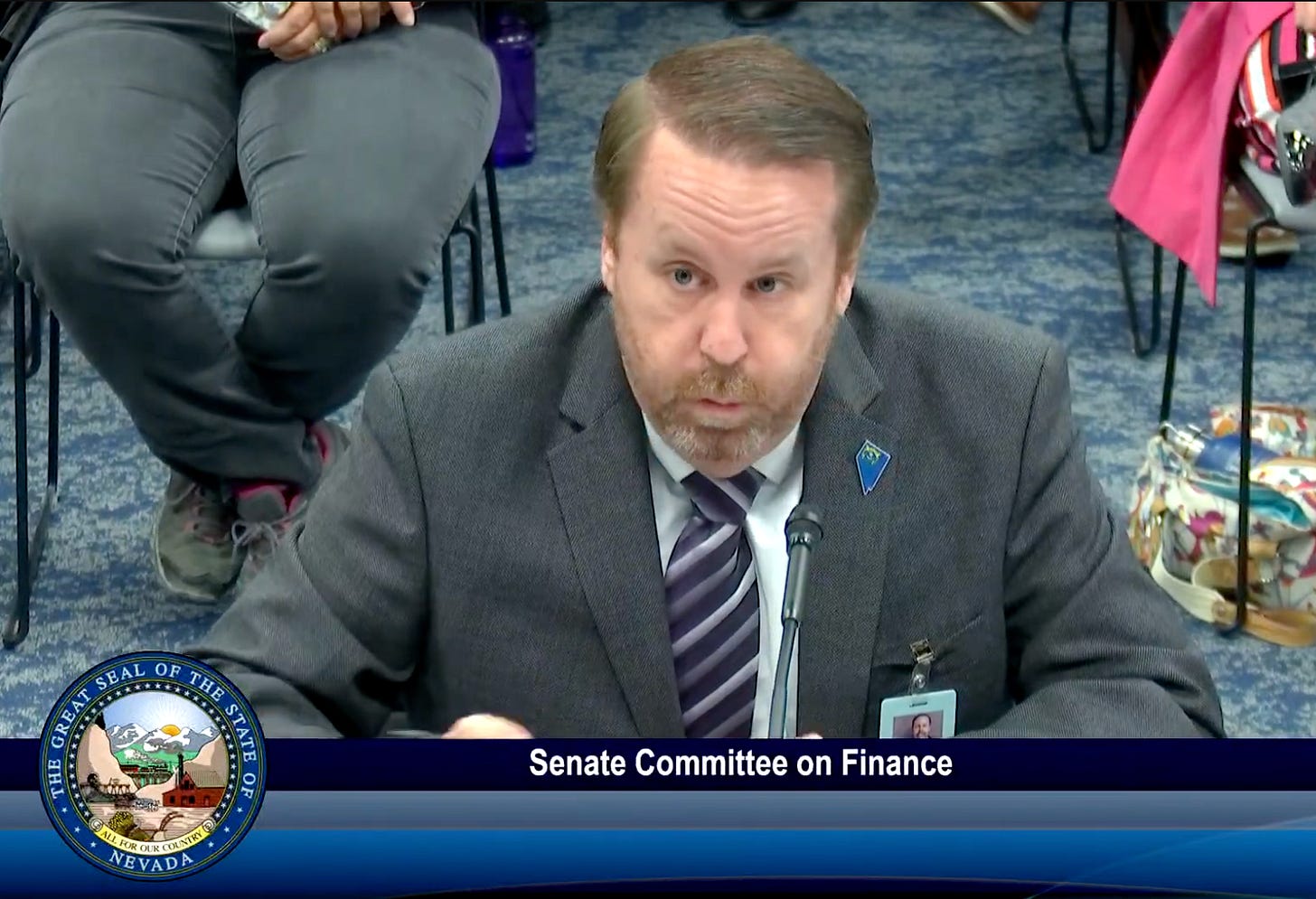
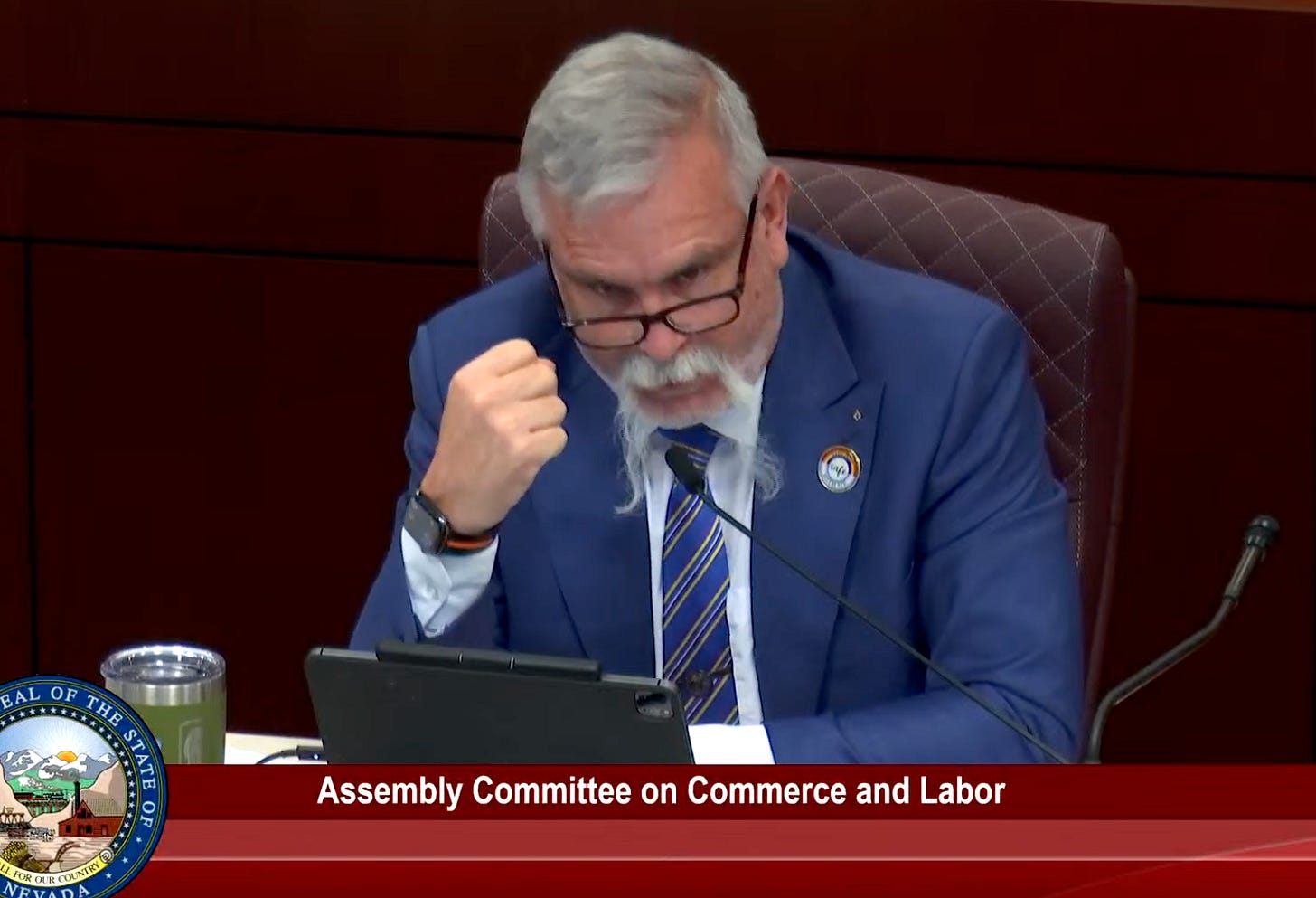
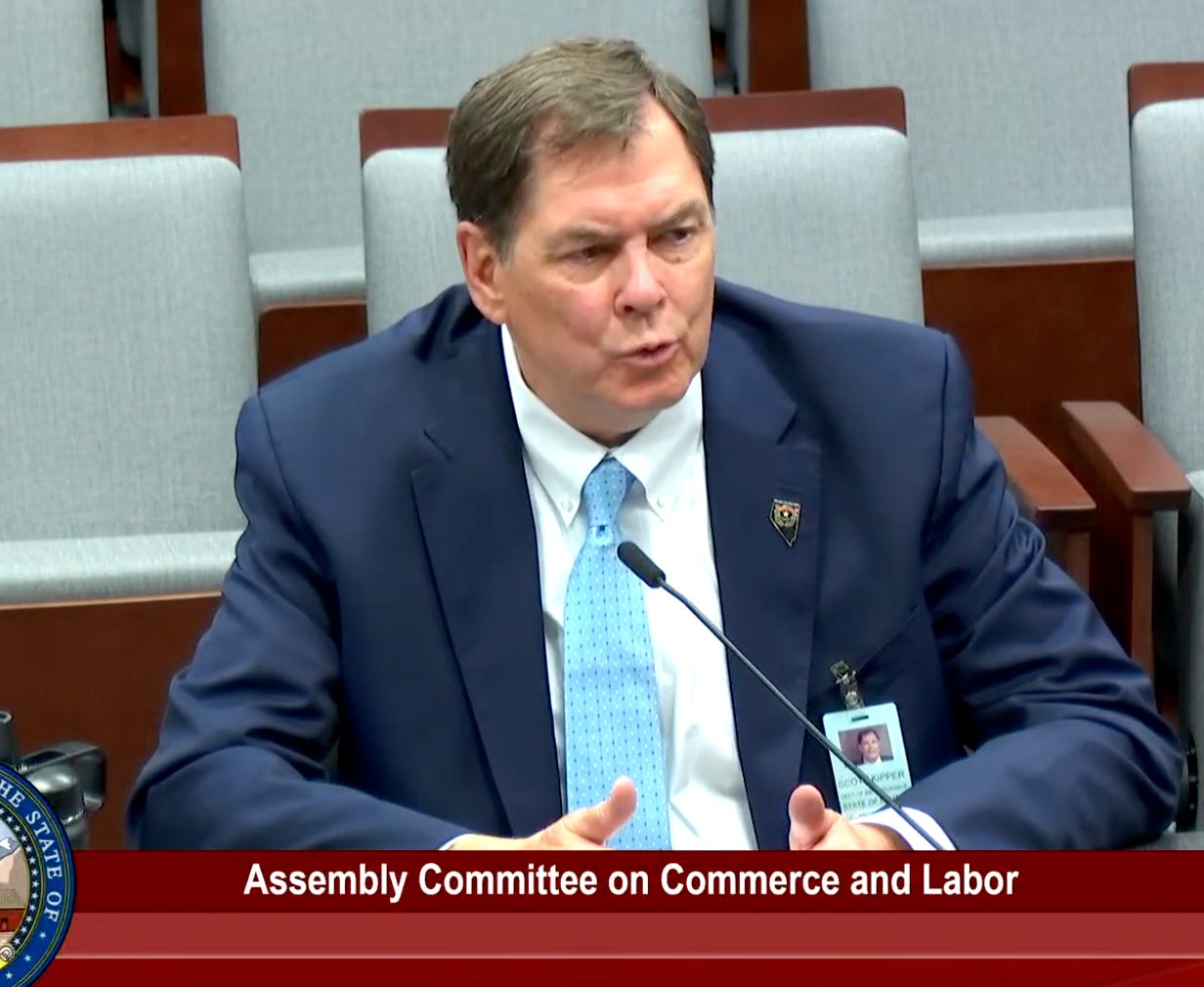
When there is talk of going naked my thoughts always go to mortgage holders and originators. Isn't comprehensive coverage typically a requirement? What happens to existing mortgages when coverage lapses, even in part?
Great piece. The thought I had reading it was: “How much will this depress the value of homes in Nevada?” Especially those near the WUI with the highest fire risk?